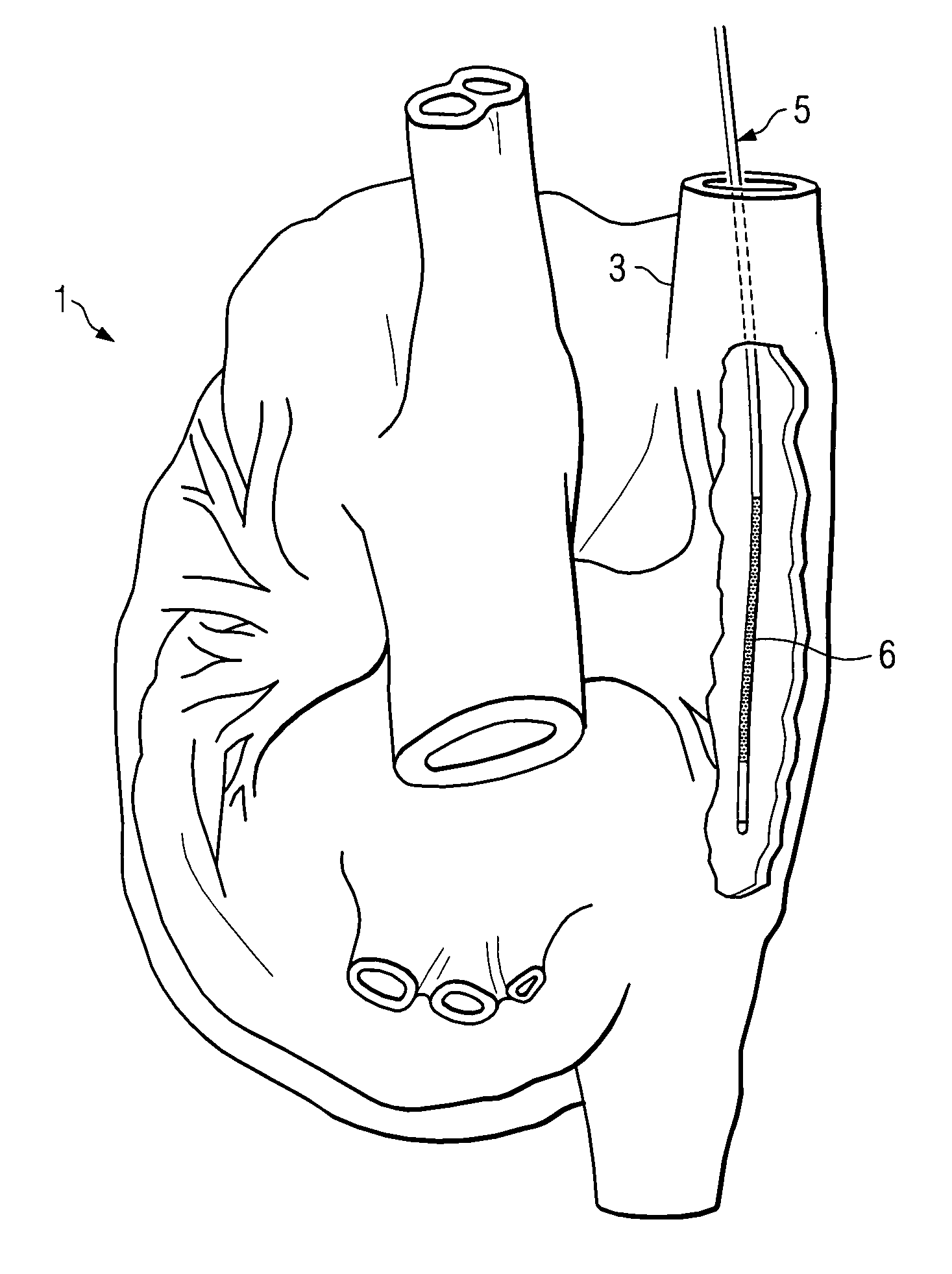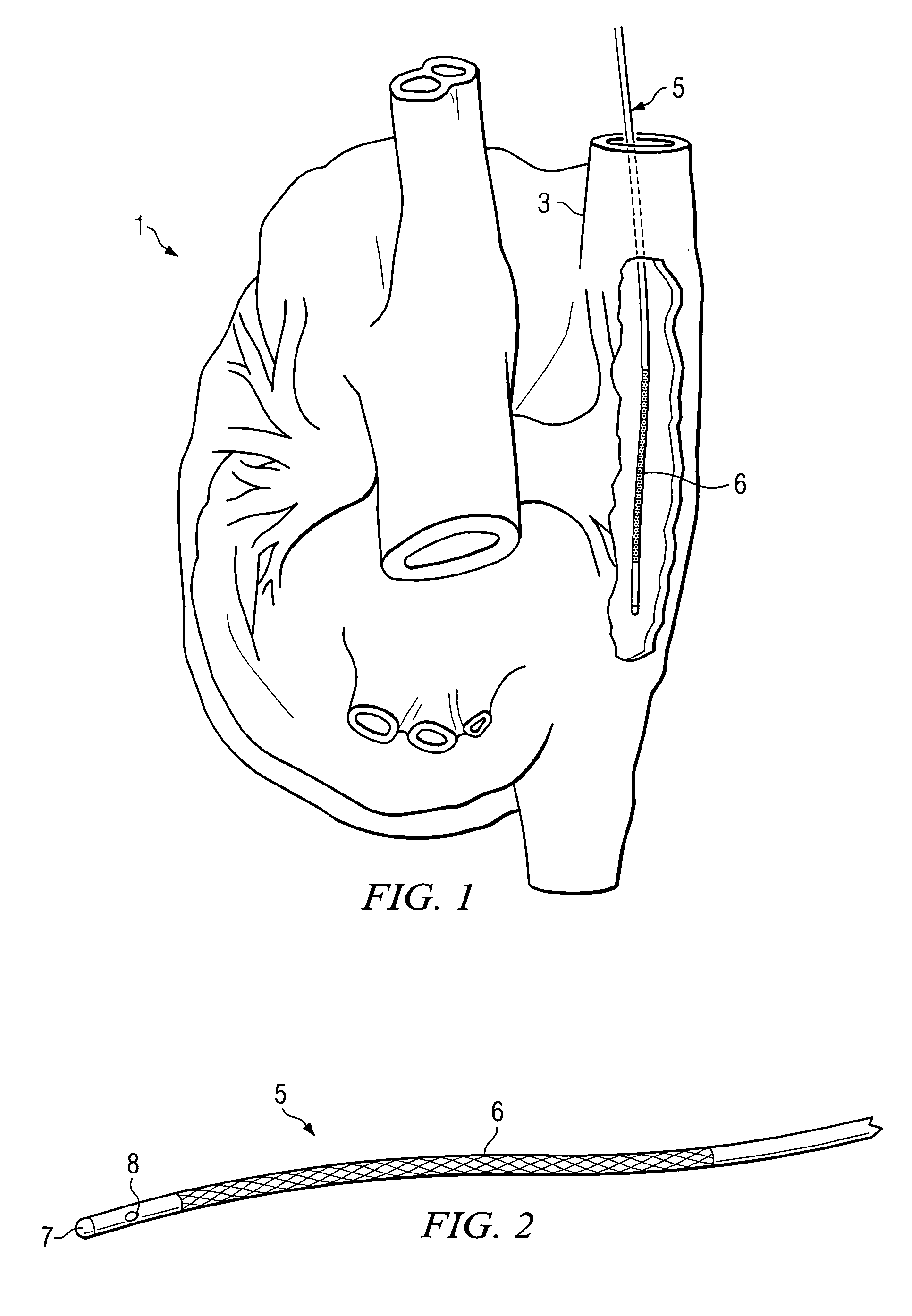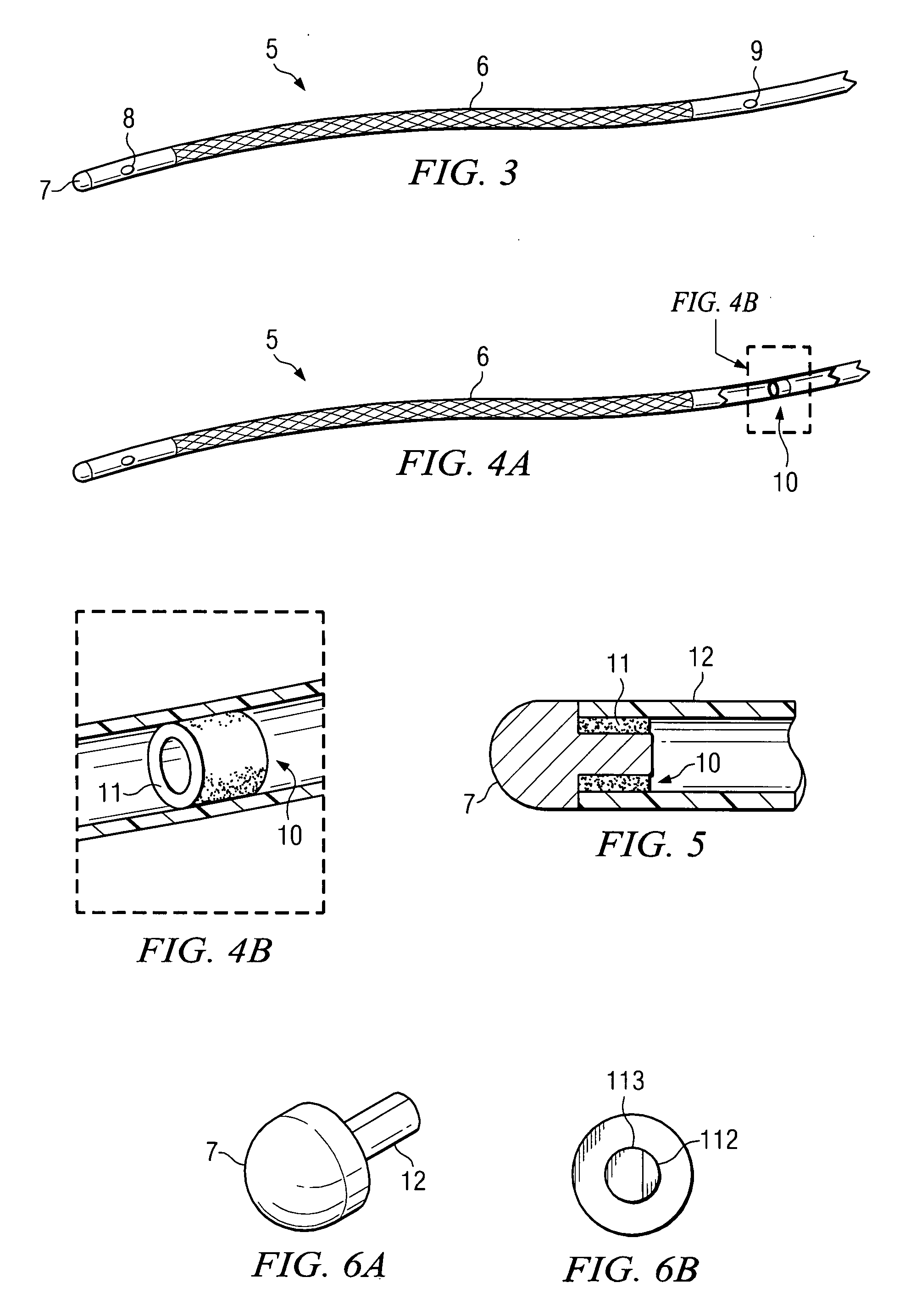Apparatus and method for guiding catheters
- Summary
- Abstract
- Description
- Claims
- Application Information
AI Technical Summary
Benefits of technology
Problems solved by technology
Method used
Image
Examples
Embodiment Construction
[0021] The present invention teaches the proper anatomical positioning of catheters, which, in the preferred form, are used to treat equine atrial fibrillation. FIG. 1 shows an image of the proper placement of catheters within the equine heart 1. A catheter 5 is placed in the right atrium 3 and said catheter equipped with a high surface electrode 6 (see FIG. 2) that acts as a cathode / anode. A second catheter is 5 is advanced into pulmonary artery 4 and more specifically the left pulmonary branch using the same mechanical and device based pressure gradients guidance techniques, the catheter being equipped with a high surface electrode 6, which acts as a cathode / anode.
[0022] The devices are designed to facilitate the technique and include several specific design attributes. FIG. 2 shows one preferred embodiment of the present invention in which a catheter 5 is equipped with a pressure sensing means 8 and an a traumatic distal tip 7 that is visible by using ultrasound or X-ray and als...
PUM
 Login to View More
Login to View More Abstract
Description
Claims
Application Information
 Login to View More
Login to View More - R&D
- Intellectual Property
- Life Sciences
- Materials
- Tech Scout
- Unparalleled Data Quality
- Higher Quality Content
- 60% Fewer Hallucinations
Browse by: Latest US Patents, China's latest patents, Technical Efficacy Thesaurus, Application Domain, Technology Topic, Popular Technical Reports.
© 2025 PatSnap. All rights reserved.Legal|Privacy policy|Modern Slavery Act Transparency Statement|Sitemap|About US| Contact US: help@patsnap.com



